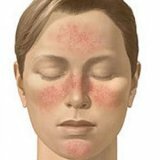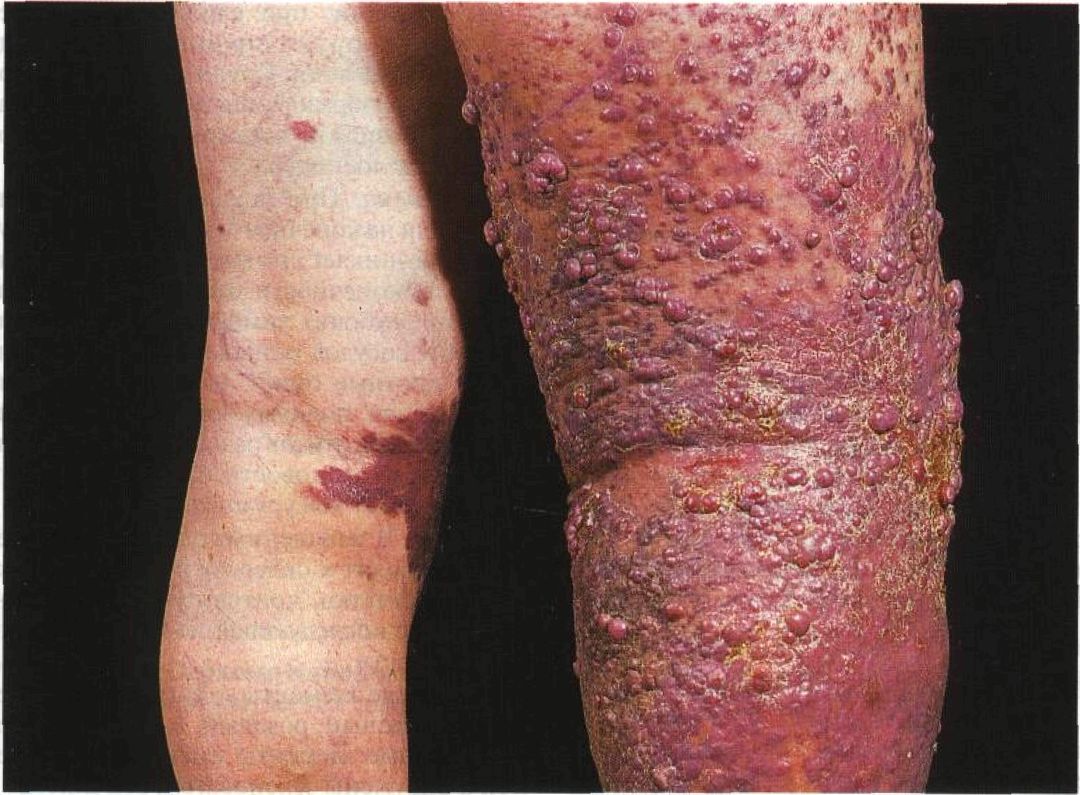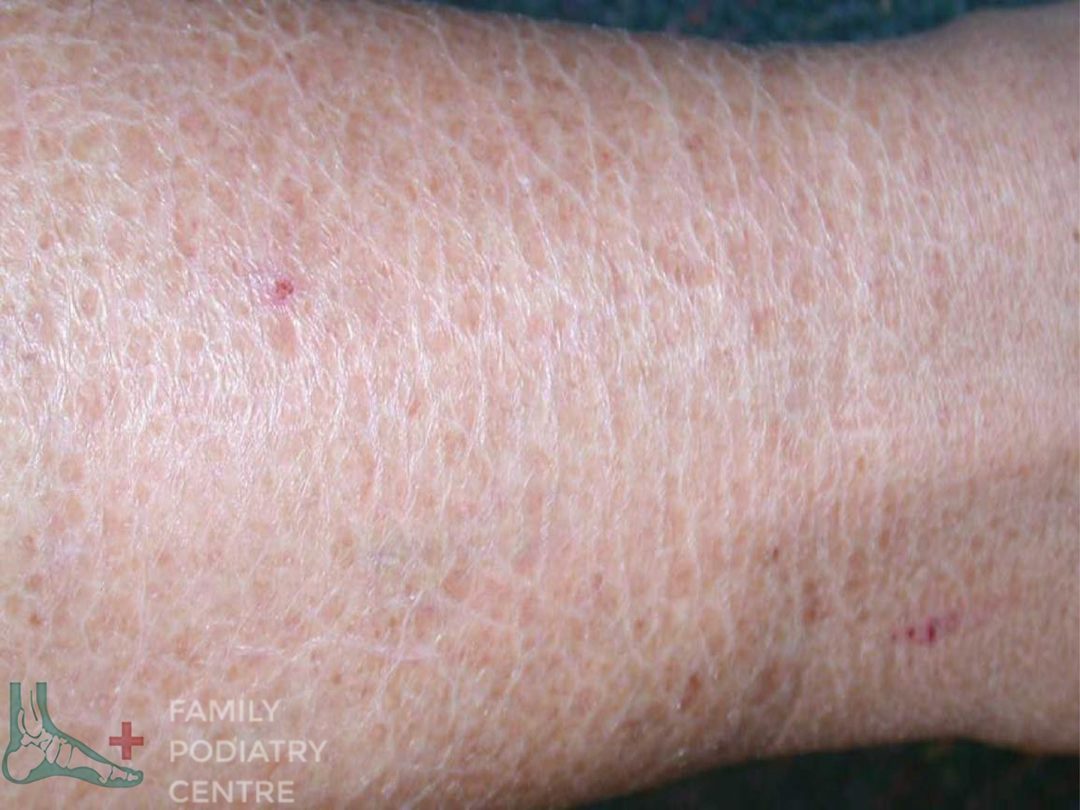Hyperhidrosis: symptoms, causes, methods of treatment
- Iodine-starch test of Minor.The essence of it is as follows: a solution of iodine is applied to the examined areas of the patient's body, after drying, the spot is stained with starch and the reaction is monitored.With the allocation of sweat, iodine dissolves and reacts with starch, from which the places on which the perspiration separates turn black.According to the size of the blackened spot doctors determine the zone of increased sweating and, accordingly, the volume of the forthcoming treatment.
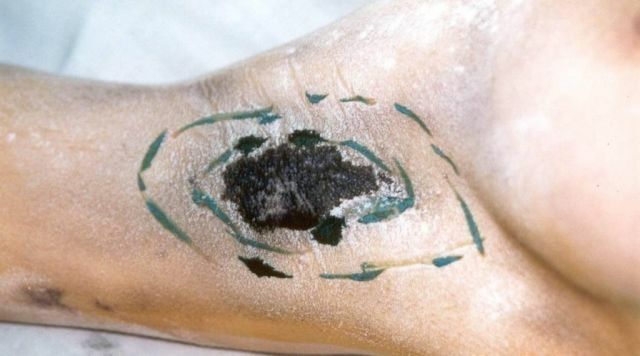
- Quantitative research methods( rarely used in clinical practice) - gravimetry, evapometry.
Treatment of hyperhidrosis
Modern medicine has various methods for treating hyperhidrosis:
- non-surgical - use of medical antiperspirants, iontophoresis;
- minimally invasive - injections of botulinum toxin;
- invasive - sympathectomy, curettage, laser treatment.
Initiate treatment usually with the least invasive methods - antiperspirants and iontophoresis.And only if they do not give the desired result, are injected with Botox or surgery.
Medical antiperspirant
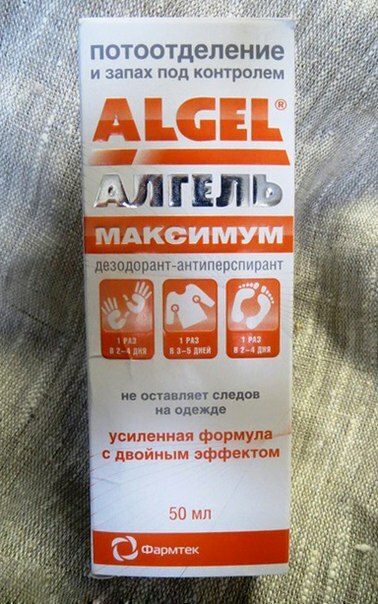 These products can be used for underarms, hands, feet and even face areas.By their action they are similar to cosmetic antiperspirants, but the concentration of active substances( usually aluminum salts) in them is much higher.
These products can be used for underarms, hands, feet and even face areas.By their action they are similar to cosmetic antiperspirants, but the concentration of active substances( usually aluminum salts) in them is much higher.
The physician selects an antiperspirant depending on the form of the hyperhidrosis and gives recommendations regarding its use, since with the incorrect application of such remedies, severe skin irritation may appear.
It is more effective to apply medical antiperspirants to the body in the evening, when sweating is reduced.The skin should be absolutely dry, not steamed, not damaged, therefore after depilation it is desirable to not use antiperspirant for several days and always wait 20-30 minutes after bath or shower.
Ionophoresis
Ionophoresis is an effective and safe method of treating hyperhidrosis.The essence of this method is that currents and ionizing substances, passing through the skin, "turn off" the sweat glands.
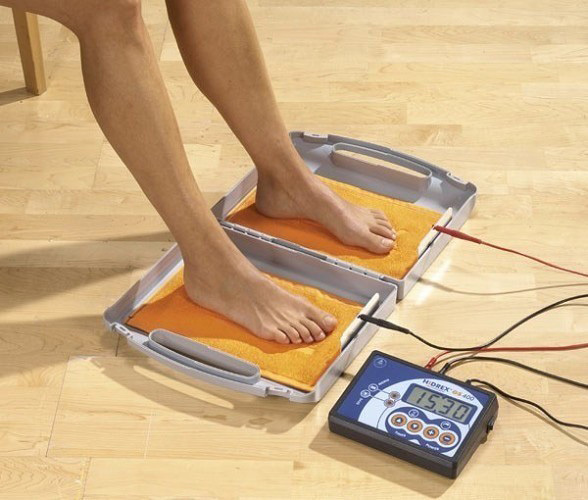
During the iontophoresis procedure, a patient immerses feet or brushes in special trays with water, to which a low voltage current generator is connected.For the underarm area, special pads are used.The duration of such a session should be 20-40 minutes.To get the result you need 5-10 sessions.Once the sweating begins to return, the procedure should be resumed.
Contraindications to the use of iontophoresis are the following conditions:
- Pregnancy.
- Presence in the body of implanted pacemakers and metal implants.
- Heart diseases.
- Epilepsy.
Botulinum toxin treatment
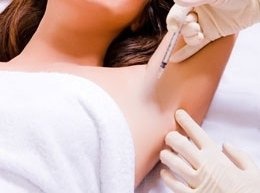 Botox injections, widely used for rejuvenation, are also used to treat hyperhidrosis.With intradermal administration, botulinum toxin blocks the transfer of nerve impulses from the nerves to the sweat glands and thereby reduces the secretion of sweat.This method is especially effective in axillary( axillary) hyperhidrosis.Carrying out similar procedures on the feet and palms can lead to temporary disruption of the fingers and is worse tolerated by patients due to soreness.However, the experience of the doctor and special methods of anesthesia make it possible to treat botulinum toxin hyperhidrosis of any localization.
Botox injections, widely used for rejuvenation, are also used to treat hyperhidrosis.With intradermal administration, botulinum toxin blocks the transfer of nerve impulses from the nerves to the sweat glands and thereby reduces the secretion of sweat.This method is especially effective in axillary( axillary) hyperhidrosis.Carrying out similar procedures on the feet and palms can lead to temporary disruption of the fingers and is worse tolerated by patients due to soreness.However, the experience of the doctor and special methods of anesthesia make it possible to treat botulinum toxin hyperhidrosis of any localization.
Before starting treatment, patients are given a Minor test that allows you to pinpoint the area in which you want to inject.After that, to reduce soreness, a special anesthetic gel is applied to the axillary region and botulinum toxin is injected with the syringe.The effect of this method of treatment persists for 6-8 months.
Contraindications to the use of botulinum toxin:
- Myasthenia gravis.
- Acute infectious diseases.
- Blood clotting disorder.
- Reception of anticoagulants.
- Inflammatory processes in places of presumed injections.
- Pregnancy.
- Age is less than 16 years.
Invasive treatments for hyperhidrosis
Curettage is a surgical method for treating axillary hyperhidrosis.The essence lies in the mechanical destruction of sweat glands with the help of a special device - curette.This procedure is performed under local anesthesia, a small incision is made to introduce a curette on the skin.The effect after curettage persists for 4-6 months, then new sweat glands appear, but such excessive sweating as before the operation, as a rule, is no longer observed.A side effect of curettage application is temporary impairment of sensitivity under the armpits due to damage to nerve fibers.
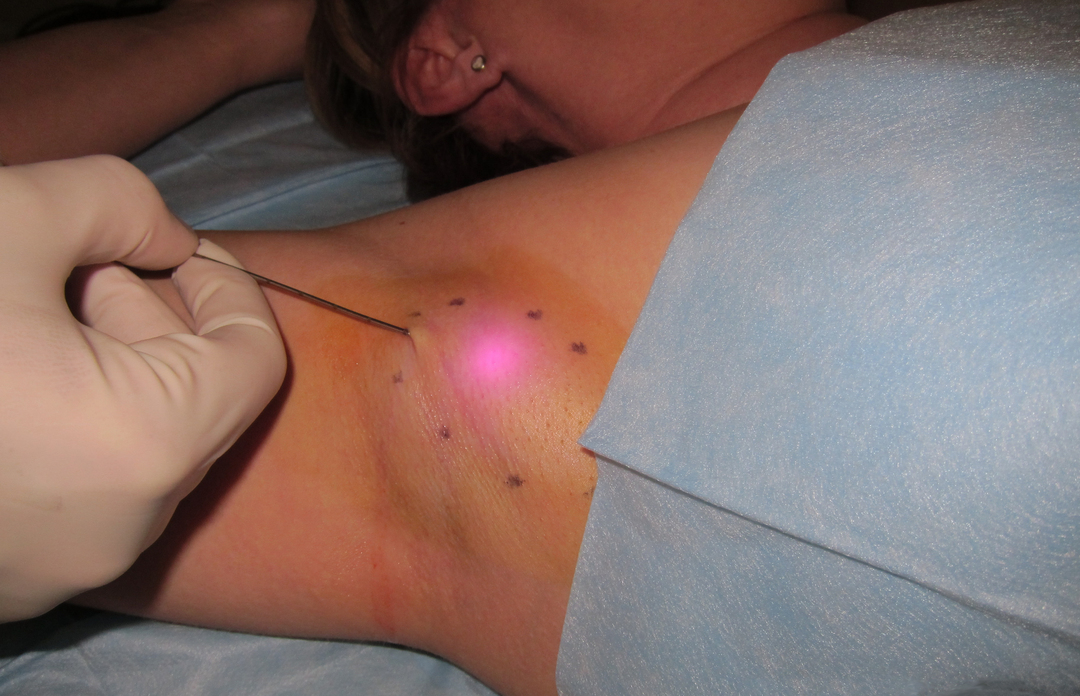 The most modern method of treating hyperhidrosis is the use of a laser. During the operation, an optical fiber is inserted under the skin of the axillary region through a small incision, after which the laser beam destroys the sweat glands.Recovery after such an operation is much faster than after the usual curettage.
The most modern method of treating hyperhidrosis is the use of a laser. During the operation, an optical fiber is inserted under the skin of the axillary region through a small incision, after which the laser beam destroys the sweat glands.Recovery after such an operation is much faster than after the usual curettage.
Sympathectomy is another method of treating hyperhidrosis, consisting in the intersection or clipping of sympathetic nerve fibers.With increased sweating of the palms, endoscopic thoracic sympathectomy is performed, and in case of hyperhidrosis, stop - lumbar sympathectomy.These operations are performed under general anesthesia.
Sympathectomy is the first among other invasive methods of treating hyperhidrosis, however it does not exclude the development of a number of complications:
- Compensatory hyperhidrosis of other parts of the body.
- Pain Syndrome.
- Inflammatory processes.
Treatment of hyperhidrosis at home
At home, to reduce excessive sweating and enhance the effectiveness of the treatment methods used, it is necessary to do the following:
- Maintain a diet.It is not desirable to eat very hot, spicy food, cocoa, chocolate, strong tea and coffee.
- Wear loose clothes and shoes made of natural materials and be sure to change the daily underwear, socks, tights on a daily basis.
- Several times a day to take a contrast shower, use antiperspirants.
- Do not smoke or drink alcohol.

In addition, the sweat can be reduced with the help of a number of folk remedies:
- Tray for hands and feet with the addition of broth from medicinal herbs( sage, oak bark, chamomile, nettle).
- Wiping sweating places with alcohol tincture from horsetail.
- The ingestion of herbal decoctions with a soothing effect( mint, melissa, motherwort).
However, it is not possible to cure hyperhidrosis only by domestic methods.In the presence of excessive sweating, you must always consult a dermatologist and get a checkup to identify the cause of this unpleasant problem.
Zubkova Olga Sergeevna, medical reviewer, epidemiologist

